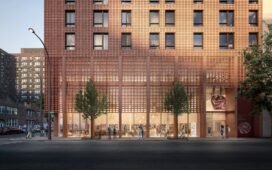Against the backdrop of increasing discussion about the bifurcation of the U.S. economy and the concentration of economic contributions by the affluent, here’s a look at some of the quiet fractures in the U.S. real estate market over the past three years.
Instead of one national market moving in sync (think pandemic-era boom), we now have bifurcated environments, driven by mortgage rates, regional economics, and demographics. Understanding this divide is crucial for investors, brokers, and anyone waiting for “the crash” that has yet to arrive.
Locked-In Owners vs. Active Buyers
Roughly two-thirds of American homeowners hold sub-4% mortgages. They’re staying put. Inventory remains historically thin, and that shortage keeps pricing elevated in many regions—even where demand has cooled.
On the other side, buyers entering today’s market are absorbing twice the borrowing cost for the same home, reshaping affordability and shrinking buying power. The result: a frozen top layer of the market, sitting above a strained active layer.
The Trump administration is actively exploring options to loosen lending standards, such as offering a 50-year mortgage. It’s also considering mortgage portability, essentially allowing low-rate borrowers to keep their mortgage and “port” it to a new property, similar to how U.S. cell phone plans allow customers to bring their numbers from carrier to carrier.
Well-capitalized investors could also explore mortgage assumptions, which are occurring with increasing frequency. In fact, we were recently able to assist a multifamily investor assume a pandemic-era $3M+, sub-4% loan on a 20+ unit property that the lender worked overtime to facilitate.
Boomtowns vs. Reversion Markets
Some metros—think the Southeast, and cities like Austin, Texas, and select Sunbelt and Appalachian cities that blossomed during the pandemic—have seen sharp corrections or explosive inventory growth. In these markets, home values are sticky, competition remains, and new construction is filling the gap.
These are the markets where prices have softened or stagnated. The gap between the two groups has widened every quarter since 2022.
The dust seems to be settling, or at least reaching an equilibrium. If these markets are on your radar, aggressive negotiations could be more well-received than anticipated. Consider incentives beyond price, such as furnishings, seller concessions to cover closing costs, and a transactional schedule and closing that is most conducive to your timelines and budget.
In strong markets, timing is critical. Keep your proverbial foot on the investment gas, and make the effort to tour (virtually or physically) prime listings as close to coming to market as possible. Be decisive and utilize your contingency period to validate the offer and property condition.
Single-Family Strength vs. Multifamily Stress
Another fault line is forming between single-family homes and multifamily assets:
- Single-family properties remain structurally undersupplied.
- Multifamily faces a wave of new inventory, softening rents, and tighter lending.
Investors who assume all real estate is moving together should drill deeper into local insights and recent transactions. Multifamily investors should connect with specialized local commercial real estate brokers/agents, gather insight from reputable local property management companies, and get boots on the ground. There is no substitute for pounding the pavement and experiencing the investment opportunity firsthand.
Speaking with tenants and neighbors can provide subtle insight that can make or break the enthusiasm for a particular area or property. In our investment experience, a strong no is more valuable than an iffy yes.
The Affluent Buyer Market vs. Everyone Else
Sales growth remains concentrated at the top of the market. In October, homes priced over $1 million saw a year-over-year jump of more than 16%, and properties between $750,000 and $1 million rose 10%. In contrast, sales between $100,000 and $250,000 inched up only about 1%, while sub-$100,000 homes declined nearly 3%.
Our forecast for 2026 and 2027 is for the luxury single-family, second home, and short-term rental markets to be exceptionally strong as a result of tax incentives (like the STR loophole), diversification and profit-taking from equities, and an anticipated reduction in mortgage rates amid the end of quantitative tightening (with the potential for easing).
What This Means for 2026 and Beyond
The U.S. market won’t “correct” uniformly. Instead, real estate investors should expect:
- Strong appreciation and demand in second home and STR hubs
- Flat or declining prices in shrinking metros
- Continued single-family demand at all levels, with price pressure on entry-level and first-time homebuyers
- Pressure on overbuilt multifamily and basic new construction areas and developments
- More uneven, hyper-localized pricing cycles
As the old adage goes: Real estate is about location. Understanding localized market conditions and financing options will be essential to successful real estate investment in 2026 and beyond.








Recent Comments